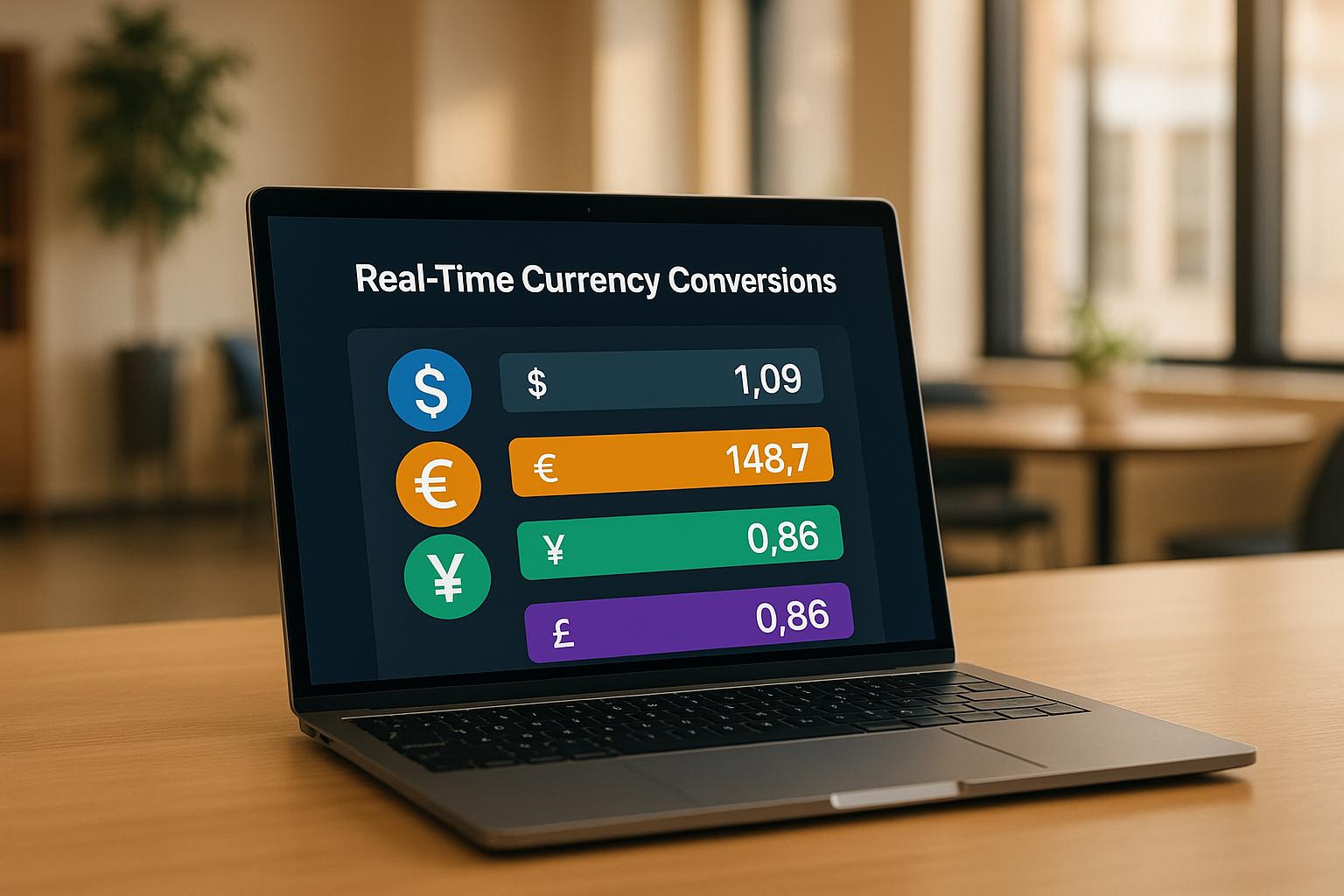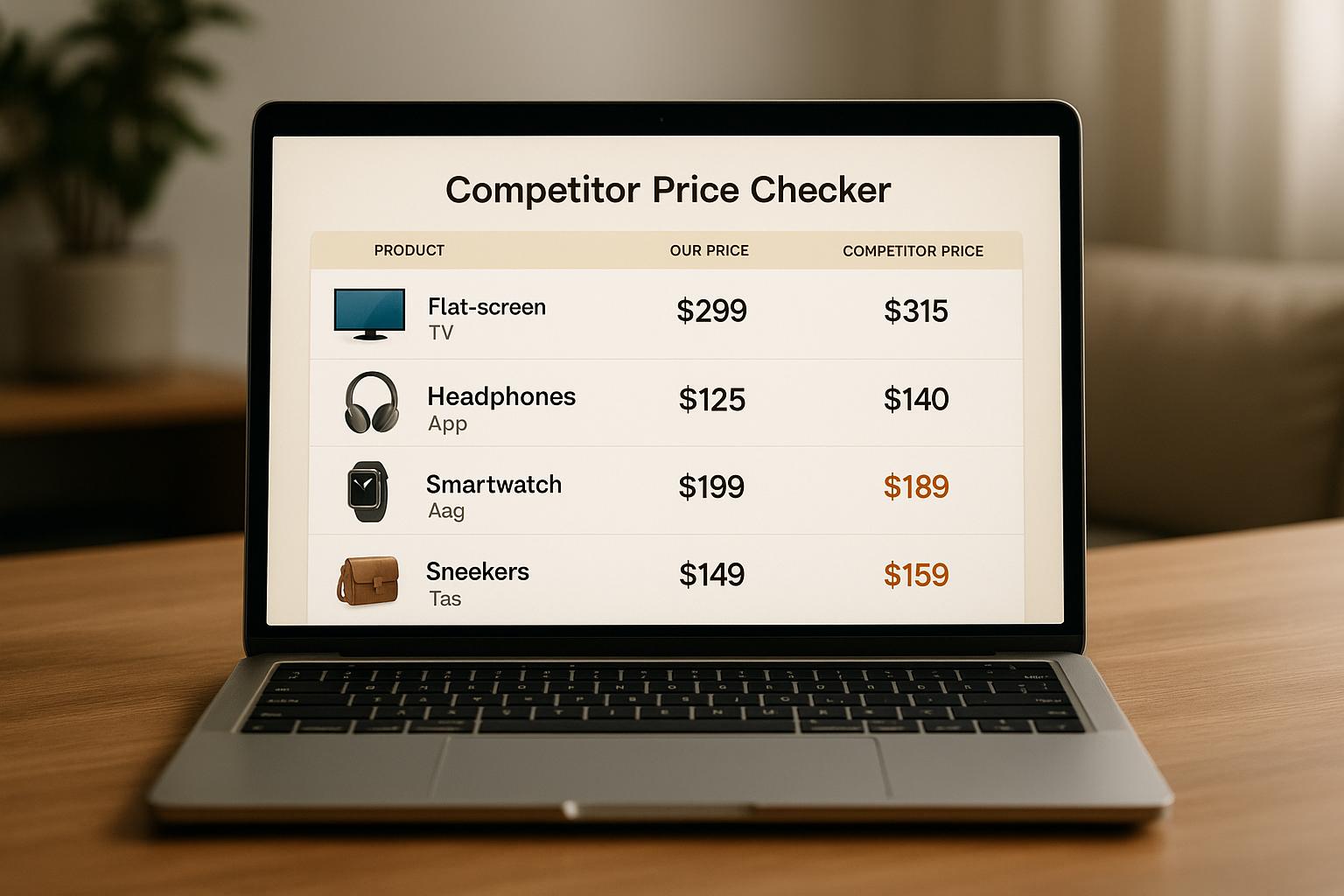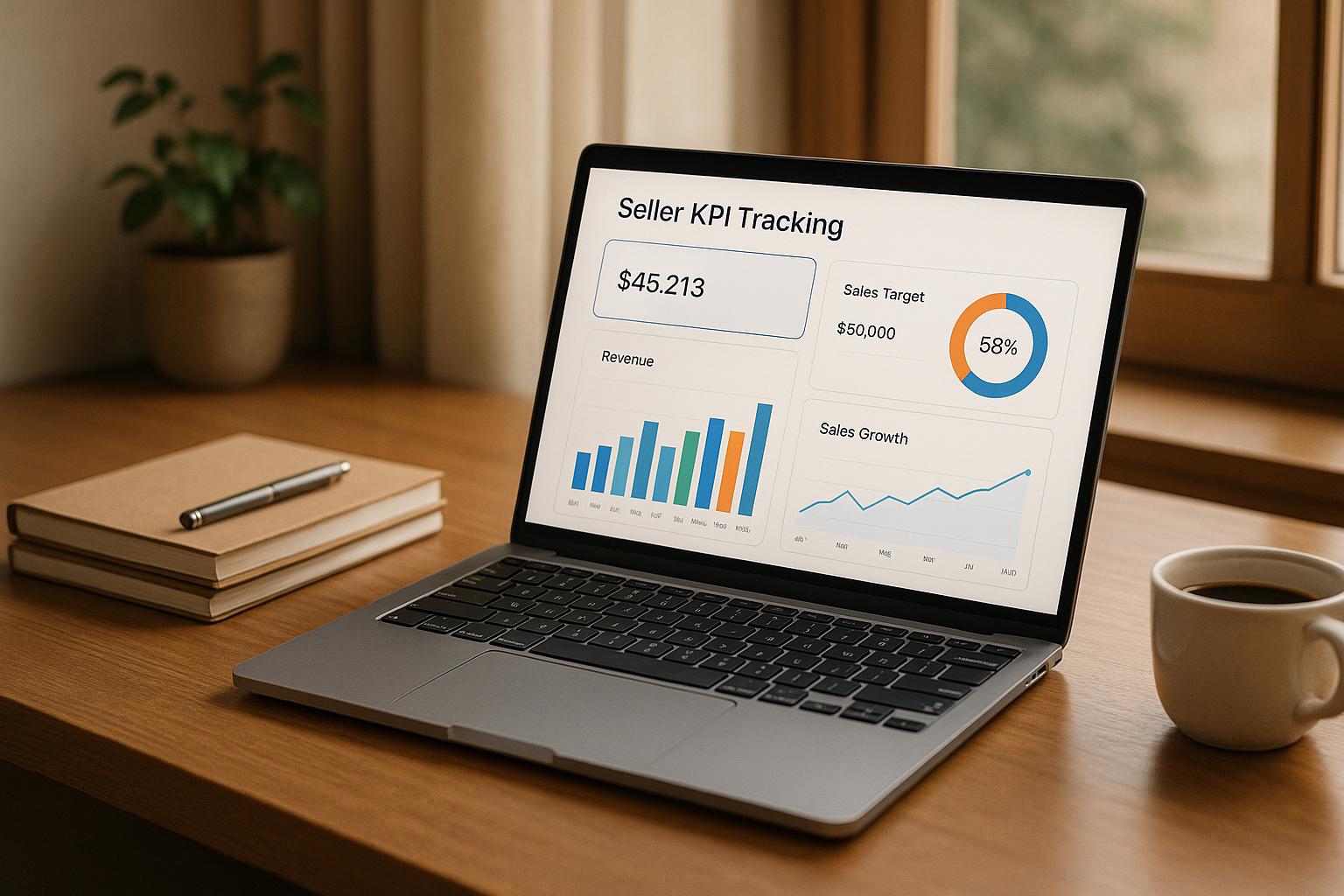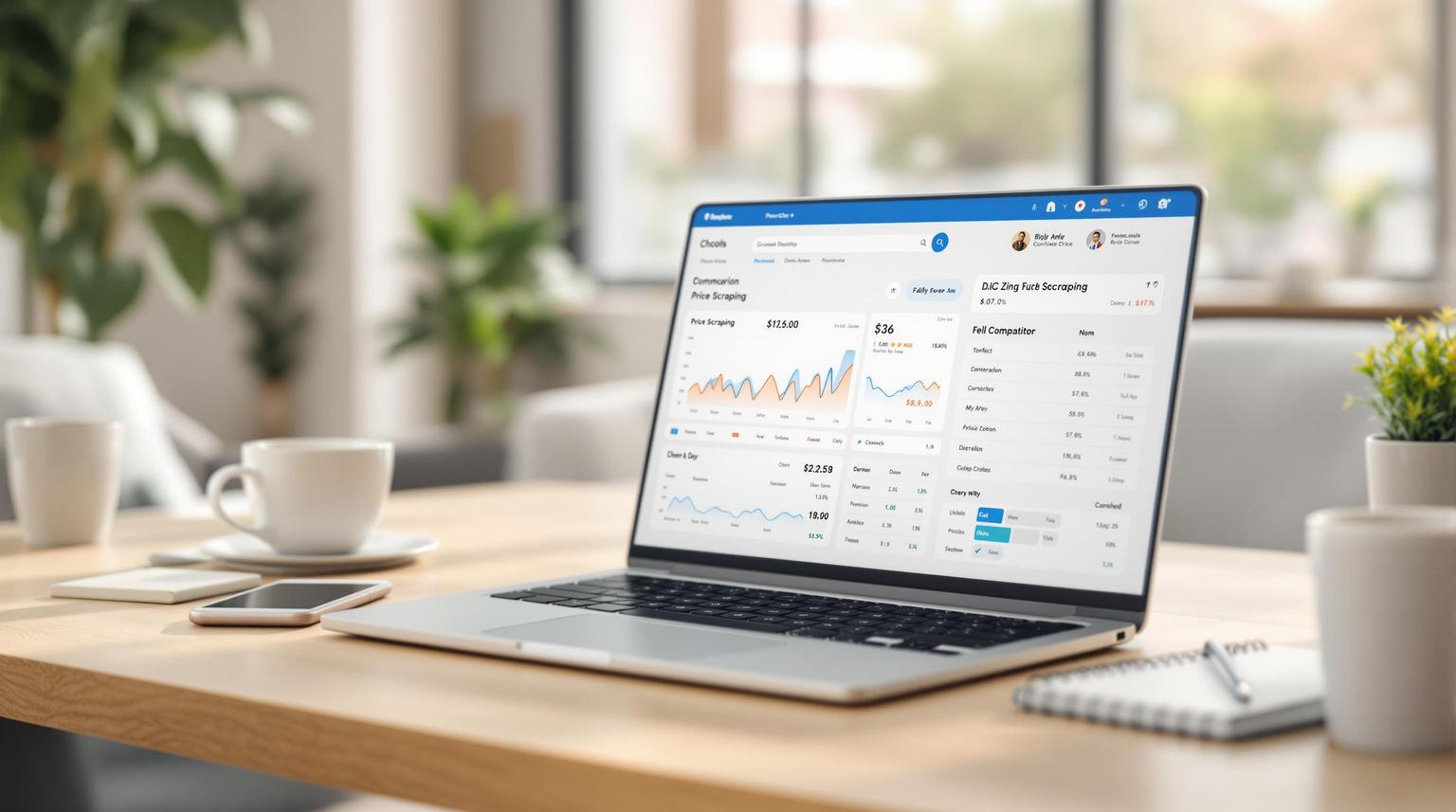How APIs Enable Real-Time Multi-Currency Pricing

July 21, 2025
In global e-commerce, showing prices in local currencies is no longer optional - it's a necessity. 33% of shoppers abandon carts if prices aren't displayed in their currency, leading to lost sales. APIs bridge this gap by providing real-time exchange rates, enabling accurate and seamless multi-currency pricing.
Key takeaways:
- APIs like ShoppingScraper, CurrencyLayer, and Open Exchange Rates power multi-currency systems by delivering live exchange rates.
- Features to consider: update frequency, currency coverage, and scalability.
- Example: Doyoueven, an apparel brand, saw an 89% increase in international sales after adopting multi-currency pricing.
Quick Comparison:
| API | Update Frequency | Supported Currencies | Best For |
|---|---|---|---|
| ShoppingScraper | Real-time | Multi-marketplaces | E-commerce pricing & intelligence |
| CurrencyLayer | 60 seconds to daily | 168 | Financial data accuracy |
| Open Exchange Rates | Hourly | 170+ | Broad global operations |
The right API depends on your business needs - whether it's real-time pricing, regional coverage, or scalability. Multi-currency pricing isn't just a tool; it's a competitive edge.
1. ShoppingScraper

ShoppingScraper provides real-time pricing data across various currencies and regions through its API-driven platform. This setup ensures businesses have access to accurate, up-to-date market insights, making it a valuable tool for companies managing multi-currency pricing strategies. Here’s a closer look at what makes ShoppingScraper stand out.
"Designed to provide real-time data on pricing, availability, and seller information, this tool is your gateway to strategic market positioning. Ideal for e-commerce professionals seeking an edge in competitive analysis and pricing strategy." - ShoppingScraper
Update Frequency
ShoppingScraper keeps pricing data fresh with high-frequency scraping. This feature enables businesses to quickly adapt their multi-currency pricing strategies. Additionally, the platform uses human-like browsing patterns during data extraction, reducing the risk of detection.
Supported Currencies
The platform supports a wide range of regions, including major markets like the US, UK, and Europe. By pulling real-time prices from sources such as Google Shopping using SKUs or EANs, ShoppingScraper ensures businesses can maintain competitive pricing across these key markets and beyond.
Scalability
ShoppingScraper offers flexible plans to suit different needs. Pricing starts with the €1 Hobby plan, which includes 100 requests per month, and scales up to Enterprise plans starting at €749. The Enterprise plan supports over 500,000 requests monthly, accommodates 5 users and 5 marketplaces, and allows additional requests at €15 per 10,000. This makes it ideal for businesses monitoring multiple markets and currencies.
2. CurrencyLayer API

The CurrencyLayer API provides real-time exchange rates sourced from commercial entities and banks, ensuring precise multi-currency pricing for businesses.
Update Frequency
The frequency of updates plays a crucial role in maintaining accurate multi-currency pricing. CurrencyLayer gathers spot exchange rate data within a 60-second market window and offers various update intervals depending on the subscription plan.
| Plan | Update Frequency | Monthly Cost |
|---|---|---|
| Free | Daily | $0.00 |
| Basic | Every 60 minutes | $14.99 |
| Professional | Every 10 minutes | $59.99 |
| Enterprise+ | Every 60 seconds | $99.99 |
For businesses that need the most up-to-date rates, the Enterprise+ plan provides updates every 60 seconds, ensuring that pricing stays aligned with real-time market changes.
Supported Currencies
CurrencyLayer supports 168 global currencies and precious metals, making it a versatile choice for businesses operating across international markets. The API delivers data in JSON format, offering both real-time and historical exchange rates for all supported currencies. Additionally, users can retrieve a full list of supported currencies through the API's dedicated list endpoint in JSON format.
This extensive currency coverage is supported by a reliable and scalable infrastructure.
Scalability
Designed with cloud-based architecture, CurrencyLayer caters to both startups with modest needs and large enterprises requiring high-volume data. Serving over 250,000 companies, the platform boasts an impressive 99.9% average uptime. Its fallback algorithm prioritizes reliable data sources to deliver accurate forex midpoints. The lightweight JSON format further ensures fast response times, making it ideal for applications that rely on swift currency conversions.
Subscription plans range from 100 API calls per month on the free tier to 500,000 requests with the Enterprise+ plan. For businesses with even greater demands, custom enterprise pricing is available, offering unlimited requests and dedicated technical support.
3. Open Exchange Rates API

Open Exchange Rates stands out among exchange rate APIs by offering a blend of frequent updates, broad currency support, and scalability. It powers multi-currency pricing for over 100,000 businesses through a simple JSON API.
"Our currency data API powers the Internet's most dynamic startups, brands and organisations." - Open Exchange Rates
Update Frequency
The platform updates exchange rates every hour, ensuring accurate data that's suitable for most e-commerce needs.
Supported Currencies
With support for over 170 currencies, Open Exchange Rates provides a dedicated currencies.json endpoint to verify available currencies. This extensive list includes widely traded currencies like the U.S. dollar, Euro, and Japanese yen, along with regional currencies that businesses may encounter when expanding globally. Its comprehensive coverage makes it ideal for multi-currency pricing.
Localization Features
The API enables businesses to customize their currency data. Using a symbols parameter, users can query specific currencies, while paid accounts gain the ability to set a custom base currency.
For example, U.S.-based businesses can display prices in various currencies while keeping their accounting in U.S. dollars. The JSON-based framework ensures quick responses and allows customization of currency formats and symbols to meet regional needs.
Scalability
With a client base exceeding 100,000, Open Exchange Rates is built to scale, supporting everything from small startups to large enterprises managing thousands of currency conversions daily. This reliability is essential for businesses that rely on consistent and accurate currency data for their pricing systems.
The API's JSON-based design integrates smoothly with existing e-commerce platforms, minimizing technical challenges. Its hourly updates and extensive currency coverage make it a balanced choice for businesses seeking dependable multi-currency solutions.
sbb-itb-65e392b
Comparison: Pros and Cons
When selecting an API for real-time multi-currency pricing, it's crucial to weigh the strengths and limitations of each platform. The right choice depends on your specific needs and the scale of your operations.
| Feature | ShoppingScraper | CurrencyLayer API | Open Exchange Rates API |
|---|---|---|---|
| Update Frequency | Real-time e-commerce data | 60 seconds to daily (plan-dependent) | Hourly updates |
| Supported Currencies | Multi-marketplace coverage | 168 currencies, 250+ territories | Extensive currency coverage |
| Focus | E-commerce data extraction | Financial exchange rates | Multi-currency business solutions |
| Uptime | High availability | 99.9% uptime rate | High reliability |
| Scalability | API integration ready | Scalable plans | High scalability |
Each API has its own strengths, tailored to different use cases. For instance, ShoppingScraper focuses on e-commerce, offering real-time pricing data and multi-currency support. This makes it a go-to choice for businesses looking to combine marketplace intelligence with currency capabilities.
CurrencyLayer API stands out with its flexible update frequencies, ranging from every 60 seconds to daily, depending on the subscription plan. This flexibility is ideal for applications that require near real-time financial accuracy. Its 99.9% uptime rate over the past year underscores its reliability. However, free-tier users are limited to daily updates, which might not suffice for businesses needing more frequent data refreshes.
On the other hand, Open Exchange Rates API provides extensive currency coverage, supporting global operations. While it offers regular updates, its hourly frequency may not meet the needs of businesses requiring minute-by-minute pricing updates. Its JSON-based format ensures seamless integration with existing systems, making it a strong contender for standard e-commerce operations.
In conclusion, each API caters to distinct operational goals. CurrencyLayer API is a solid choice for businesses demanding frequent updates for precise financial data. Open Exchange Rates API is better suited for companies with less time-sensitive requirements but broad currency needs. Meanwhile, ShoppingScraper provides a comprehensive solution by integrating competitive pricing intelligence with multi-currency support, making it particularly appealing for e-commerce-focused businesses.
Additionally, CurrencyLayer API's support for 168 currencies across 250+ territories ensures a broad geographic reach. Similarly, Open Exchange Rates API's extensive currency coverage makes it a reliable option for operating in diverse global markets. Both platforms enable businesses to effectively manage multi-currency operations across a wide range of regions.
Conclusion
Real-time multi-currency pricing through APIs has become a must-have for businesses operating in global markets. Each API solution offers distinct benefits, so selecting the right one is a critical step toward ensuring smooth operations and staying competitive.
Here’s a quick rundown of the strengths of the APIs discussed:
-
ShoppingScraper: Ideal for businesses focused on e-commerce intelligence. It provides real-time pricing data with a 99% uptime rate and tracks products at the EAN level for detailed insights. As Toon Hendrikx, Founder & CEO of 10XCREW, puts it:
"ShoppingScraper has been a key asset for our agency. With the support of ShoppingScraper we are able to collect massive quantities of relevant data, which feeds our systems, and provides our specialists with data-driven insights that help them make better decisions about advertising, optimization, pricing and inventory management, leading to increased sales and profits."
- CurrencyLayer: Delivers flexible and near real-time currency updates, making it a solid choice for businesses needing ongoing financial conversion data.
- Open Exchange Rates: Offers broad currency coverage with hourly refreshes, catering to companies requiring frequent updates across multiple currencies.
The right choice depends on your specific needs. Businesses requiring a blend of marketplace intelligence and currency conversion may find e-commerce-focused solutions like ShoppingScraper more fitting. On the other hand, companies with straightforward financial conversion needs might prefer specialized tools like CurrencyLayer or Open Exchange Rates.
Scalability is another key factor. Both CurrencyLayer and Open Exchange Rates demonstrate the ability to manage growing demands, offering reliable updates and broad coverage. Whether you integrate via RESTful APIs, web applications, or spreadsheets, aligning the solution with your technical resources is essential.
Ultimately, API-driven multi-currency pricing empowers businesses to make faster decisions and respond to market changes effectively. Bartosz Ferenc, CEO of Sembot, highlights this advantage:
"In a competitive market, you need every advantage you can get. ShoppingScraper gave us that edge, helping us outperform our competitors using real time pricing data."
Balancing factors like update frequency, currency coverage, reliability, and ease of integration is crucial for selecting the API that will best support your business goals.
FAQs
How do APIs help maintain accurate and up-to-date multi-currency pricing in e-commerce?
APIs are essential for delivering accurate, real-time multi-currency pricing on e-commerce platforms. By tapping into live exchange rate data, they enable automatic currency conversions that align with current market rates.
With API integration, businesses can instantly update and synchronize prices across platforms, ensuring consistency and eliminating issues caused by outdated exchange rates. This enhances the shopping experience for customers while helping businesses maintain a competitive edge in global markets.
What should businesses look for in an API to support real-time multi-currency pricing?
When choosing an API for real-time multi-currency pricing, there are several critical aspects to consider:
- Accuracy and reliability: The API should deliver precise, up-to-date currency conversion rates to prevent pricing inconsistencies.
- Global coverage: Opt for an API that supports a broad range of currencies and regions, ensuring it meets the needs of your international operations.
- Scalability and performance: The API must efficiently handle a growing number of requests as your business expands.
- Ease of integration: Look for clear documentation and compatibility to make the integration process smooth and hassle-free.
- Security: Confirm the API employs strong encryption and other safeguards to protect sensitive information.
By focusing on these factors, businesses can maintain accurate pricing across currencies, simplify operations, and improve the overall shopping experience for their customers.
How do APIs improve international sales with real-time multi-currency pricing?
APIs are a game-changer for boosting international sales, especially when it comes to showing prices in a customer's local currency. Displaying prices in a format shoppers are familiar with builds trust and makes them more likely to complete their purchase, cutting down on cart abandonment.
By providing real-time exchange rate updates, APIs ensure pricing stays accurate and competitive. This level of transparency not only keeps customers happy but also simplifies operations for businesses. Automating these processes saves time, reduces mistakes, and creates a smoother, more reliable shopping experience for everyone involved.
Related posts
























































